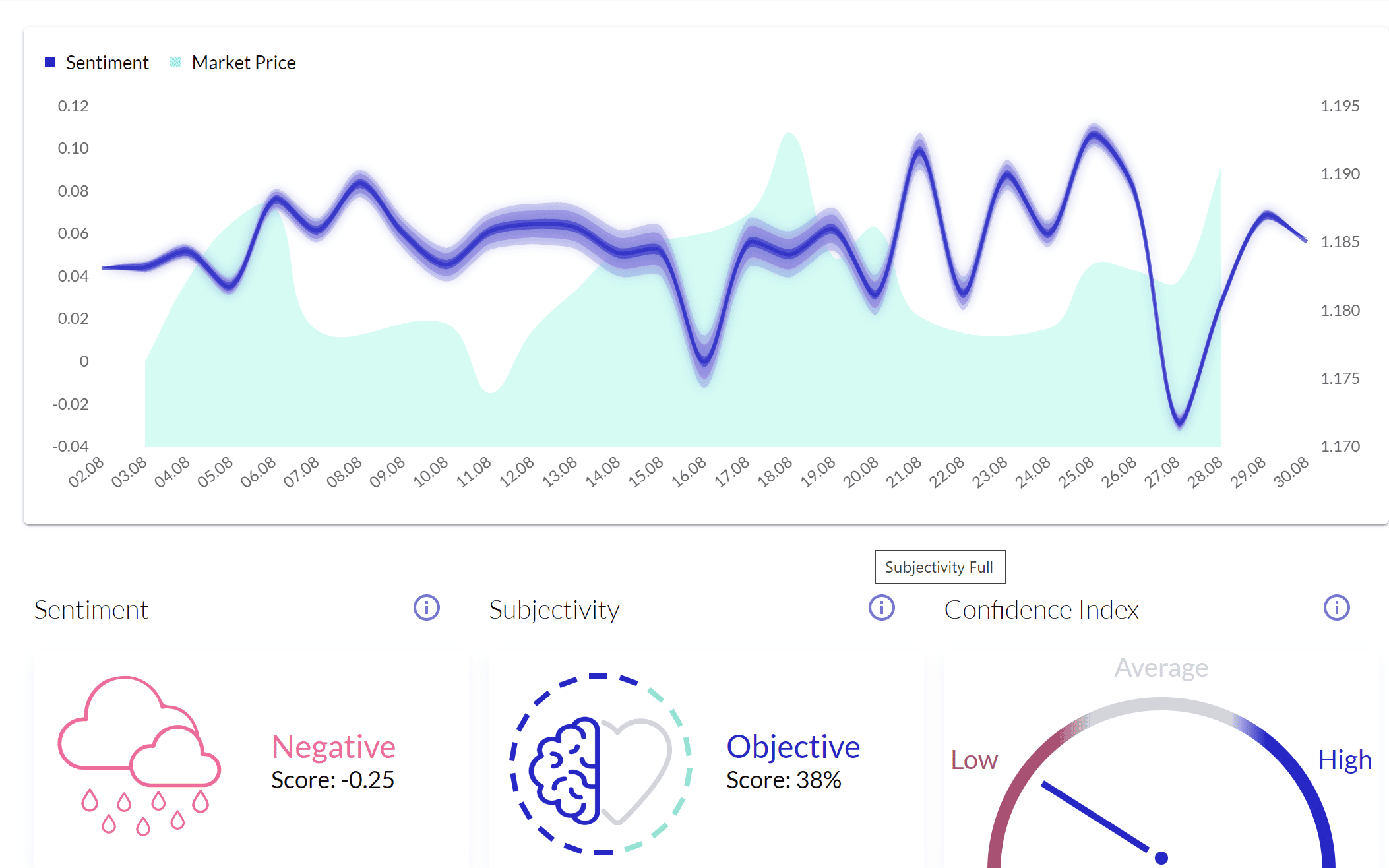A quick guide to the sentiment tools in the hub

A wonderful client of ours named Jimmy from up north in Indonesia wanted to learn a little more information about the sentiment tools that we have on offer. We love helping traders grow and your feedback so figured it deserved its own post.
Because the sentiment is based on advanced Natural Language Processing (NLP), an advanced form of Artificial Intelligence, we know it might seem daunting to look at on first glance, so hopefully, you find the below Q&A interesting.
What is the sentiment chart telling me? Is there any significance to the “wave” itself?
The wave line is the sentiment score. The wave effect was created to show that contrary to prices on the particular asset class, the sentiment is not a precise measure. It is more a proxy than anything else.
What is the sentiment score? How is that calculated?
The machine learning model creates a sentiment score by scouring all of the words in the sources selected (e.g. nouns, pronouns, adjectives) within the articles it scans each day. In a simplified way, it is the difference of the score of the positive words (e.g. good, very good, great) minus the score of the negative words (e.g. bad, very bad, awful) embedded within the article.
The calculation is made on a 24h rolling window with a recalculation latency of 15 minutes.
The usefulness of the current sentiment the score is relatively short term (1-3 weeks).
What is the subjectivity score? How did it arrive at this number? What happens if it goes higher or lower?
The subjectivity is calculated on the difference between the factual words and the emotional words embedded within an article. If there are a lot of words that fall into the “fear” lexicon for instance compared to factual observation, then the gauge will be more inclined towards subjectivity or irrationality. At 0% the gauge would tell you there is no irrationality from the crowd and any article published is based on factual elements. If the gauge is above 50% and close to 100%, it means the crowd is a bit irrational about the asset and the price of the asset is not a reflection of its fundamental value. This is a great tool to detect bubbles in asset classes like equities.
What is the confidence index?
The confidence index is a relative index. It looks at the history of the volume of news and will scan over a period of 24 hours. If the volume of news is greater than the average of news published over the last 7 days, it would give you an indication about the quality of the sentiment score and how much trust you should have on it. e.g. if the sentient score is very positive but the confidence is low, you should be sceptical of the sentiment. In summary, the more sources and the more information, the more accurate the AI will be in providing its level of confidence.
We’ll never share your email with third-parties. Opt-out anytime.